Tools for Parents
Interested in learning more about Tools of the Mind, the importance of make-believe play and self-regulation and executive functions development? Learn the basics here.
Parents of Children in Tools
What will my child’s experience in a Tools PreK or K be like?
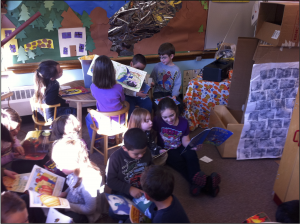
Wonderful! Your child’s teachers will individualize instruction, meeting each child where he or she is in development each day. Your child will be engaged in rich make-believe play with peers, have the opportunity for free play, and engage in small group and partnered literacy, math and science learning activities throughout the day. Tools teachers manage transitions, and set up a classroom environment and schedule to support children’s self-regulation and executive functions development. Children learn fingerplays, songs and play movement games to recharge as needed. A child in a Tools classroom is partnered with and plays with every other child in the class, and has a teacher focused on the development of the whole child. Tools classrooms are happy places to learn to and grow.
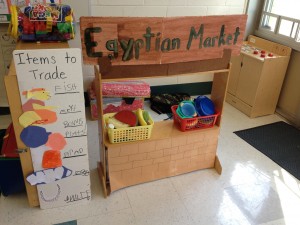
In kindergarten, dramatizing the interactions and events in chapter books is the evolution of make-believe play. Your child will help transform the classroom into different times and places––from Medieval Europe, to the Savannah; from Ancient Egypt and Japan to the Ice Age and rainforest. Children work with teachers in small groups to engage in literacy activities building foundational skills for reading, and write daily using the Tools approach to writing, Scaffolded Writing. They receive reading instruction from the teacher and read daily with a peer. Each child has a Learning Plan and children plan their learning each day, setting weekly learning goals and working with a different ‘Study Buddy’ each week. The Tools approach to supporting self-regulation and executive functions development is woven across all activities and the teacher’s approach to classroom management. In a Tools kindergarten classroom, children are well on their way to being independent self-regulated learners, with the skills they need to be successful in school and life.
What are executive functions and self-regulation and why do they matter?
Executive functions and self-regulation are underlying mental processes that allow us to plan, intentionally focus, sustain or shift attention as needed, remember on purpose, and manage how much energy we put into a task. These are all abilities we draw on when we need to learn something new. These abilities are tied to brain function that undergoes significant development in the early childhood years, and children’s early home and school environments play a big role in shaping their development. Research on the impact of these core underlying abilities shows that children who develop them have better long range outcomes into adulthood. They do better in school, have more friends and are more successful later in life. What’s exciting, is that we have a unique opportunity to impact the development of these skills in early childhood.
Why is make-believe play or dramatization important to my child’s development?
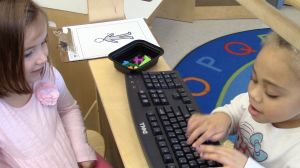
Vygotskians identify ‘leading activities’––activities that have the most potential to impact children’s cognitive and social development at different ages. The leading activity for preschool- and kindergarten-aged children is intentional, mature make-believe play. Self-regulation and executive functions develop through engagement in this kind of play, creating a strong foundation for later learning.
What is self-regulation?
Self-regulation is a set of underlying abilities that allow children to be successful in social interactions and learning. It’s tied to brain development that occurs in the early childhood years and can be influenced by a child’s early environment. Parents and teachers can support the development of children’s self-regulation, which will have a long term positive impact in children’s lives.
What does self-regulation look like in young children?
Children without self regulation may not be able to stay seated, sit through dinner or a game. Children with self-regulation can control their attention enough to listen to a story, play a game, and sit through a meal. Their attention may wander, but they can bring it back to the task at hand.
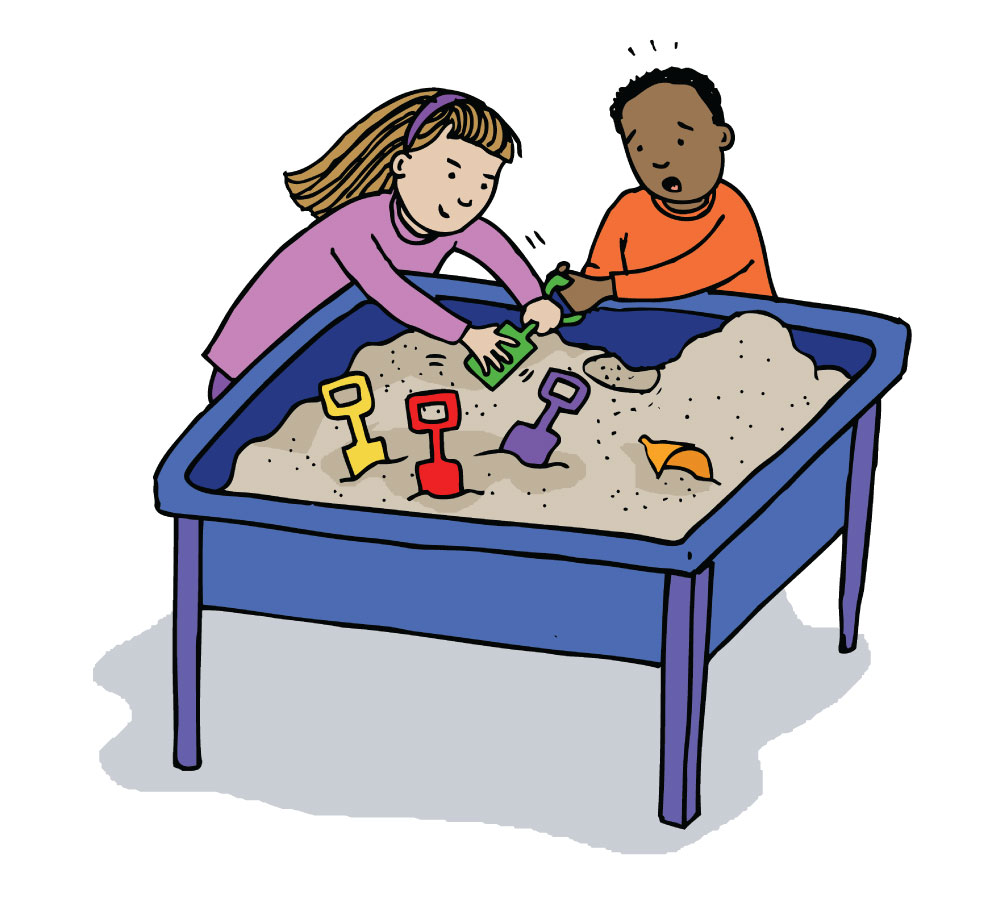

Without Self-regulation
-
Children have a difficult time with transitions like clean up or bedtime – ending something they want to do and doing something they don’t want to do! They may ‘melt down’ and find it difficult to stop and transition.
-
Children without self-regulation may not be able to stay seated and listen to a a story, sit through dinner or a game.
-
When facing a difficult learning challenge, children without self-regulation can get easily discouraged and give up. Their minds and attention wander to other things.
With Self-regulation
-
Children can manage a transition like bedtime or clean up time, even when they are disappointed that a fun time is coming to an end. Young children may still need support–but selfregulation is what’s needed to be succcessful at this.
-
Children can control their attention enough to listen to a story, play a game, and sit through a meal. Their attention may wander, but they can bring it back to the task at hand.
-
With self-regulation, a child can persist at challenging learning tasks, focusing his attention and intentionally using strategies to be an independent self-regulated learner.
How does the Tools program support my child’s development of self-regulation and executive functions?
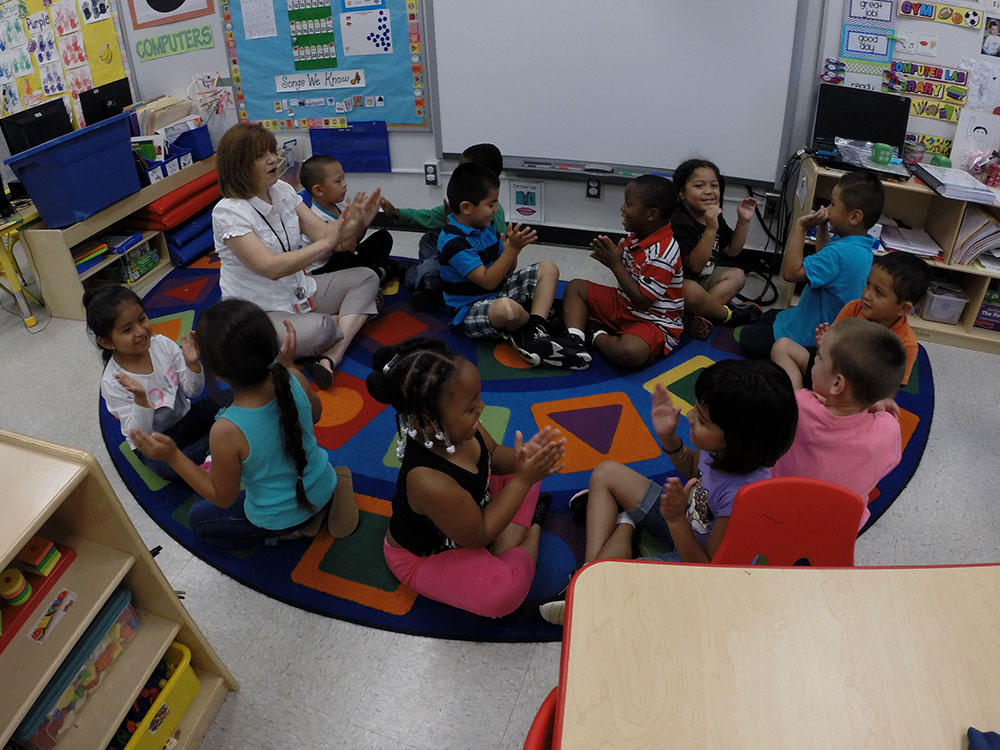
The Tools program has designed the daily schedule, the way in which teachers manage transitions and support positive behaviors, and all classroom activities to support the development of self-regulation and executive functions skills. Teachers engage children in fun activities like movement songs and fingerplays, use a special song to cue clean up time and support the development of intentional mature make-believe play to support your child’s development of self-regulation and executive functions. Children learn to plan their play, intentionally focus and sustain their attention, learn and use strategies for remembering and learning, and reflect on their work. They practice inhibiting behaviors, acting intentionally and flexibly shifting their attention in fun small group and partnered games and activities. Your child’s teacher will share more with you about classroom activities and your child’s development. In PreK, look for children’s Play Plans, and in K, look for Chapter Summaries, Fact Books and Learning Plans (in K) to come home. Ask your child to tell you about her or his ‘plans’ and what he or she is learning!
How can I learn more?
Your child’s teacher will share more at conferences and parent meetings and in classroom newsletters. You might also be interested in reading more about the Tools approach in our book, Tools of the mind: the Vygotskian approach to early childhood education (2nd ed.). Columbus, OH: Merrill/Prentice Hall. Bodrova, E. & Leong, D. J. (2007) or reading some of our selected articles about Tools and cutting-edge research in our Newsroom.
Parents Interested in Tools
Where can I find classrooms using Tools of the Mind?
Tools of the Mind is currently being used in a variety of settings, including public and private preschools and kindergartens, charter schools, and Head Start programs. For the locations of Tools of the Mind schools and early childhood programs in the USA and around the world, visit our locations page.
Does my child’s school promote the kind of play that supports self-regulation and executive functions development?
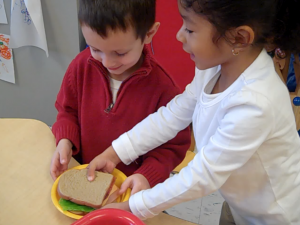
Almost all programs for young children have some kind of play going on. The problem is that not all play helps children develop self-regulation and executive functions skills. In some centers, children play with things and not each other. Instead of becoming engrossed and playing for a significant amount of time, some children wander from center to center.
In order for play to help children develop self-regulation and executive functions skills, teachers need to plan for make-believe play, and have strategies for helping children develop this play in the same way they work on letters and numbers. Only mature make-believe play, in which children pretend to be someone, and become so engrossed that they act and talk like the person, promotes self-regulation and executive functions development.
To determine whether your child’s preschool program includes the type of play that promotes the development of self-regulation and executive functions, watch for the features in the list below. And while you are evaluating the program, remember that real play is something that teachers cannot “stage” to impress the parents, and it can be better on some days than others—visit the classroom more than once to get a true picture of how good the play is. And most important, play should be fun!
Features of Early Childhood Classrooms that Support Make-Believe Play:
Environment
In a good preschool play program the environment is set up so that children have props and costumes to use for play. Children should be dressing up and playing someone, like the mommy or daddy, the doctor, or the waiter at a restaurant. In kindergarten, children can wear costumes to dress up or use hand or stick puppets or small figures in their play.
Props
When it comes to toys and props, the rule of thumb is the older the children the less realistic are the props. Plastic food is okay for 2-year-olds, to give them an idea for pretending, but in a 4-year-old classroom you would want to see more props that children have re-purposed or made by themselves. In kindergarten, children can make most of the props out of recycled materials.
Play themes
In PreK, play themes involve things that children have had experience with, such as the family or grocery store. During play, the center should look like a home or a grocery store so that children can feel like they are in that place. In K, children can play themes farther from their own lives––outer space exploration, visiting another time and place (knights, princesses and castles), etc.
Time for Make-believe Play
Children play for at least 30 minutes a day (longer in full-day programs), uninterrupted by lessons or teaching activities. Two 15-minute play times are not the same as an uninterrupted 30 minutes.
Roles and Language
Children play with other children and talk about what they’re going to play together; “Let’s pretend that you’re the baby and you’re sick. I’ll be the dad and I have to take you to the hospital.” When children are playing, they are pretending to be someone. Children talk like that person and act like that person. The roles that they play interact in a complementary way. The “doctor” gives the “patient” medicine and the patient tells the doctor what is wrong with her. When the “doctor” talks to the “patient,” she will say things like, “I need to take your temperature,” or “I’ll write you a prescription.”
Teacher Facilitation
Teachers actively help children learn how to pretend by modeling different roles and by helping children think of what might come next. Teachers don’t direct all of the play but step out once children seem to get their pretend ideas going.
Teacher Knowledge
Teachers should be able to explain and articulate what their philosophy of play is. Why do they have play?
Beyond the Basics
What can I do at home to support self-regulation and executive functions?
If your child is enrolled in a Tools of the Mind program, you will receive newsletters describing activities used in the classroom to support self-regulation and executive functions, as well as suggestions for how you can foster self-regulation and executive functions at home. Here are some strategies to get you started:
Promote Self-talk or Private Speech
We talk to ourselves, silently or out loud, to remember information like phone numbers or directions and regulate our behavior, repeating instructions to ourselves. Children need to do the same thing, only they can’t yet do it silently. Supporting children’s self-talk is a way to support their development and learning how to learn. With very young children, you can have them tell a friend, a stuffed animal, or say something out loud to help themselves remember. With a 5-year-old, you can tell her that if she repeats something to herself, it will help her remember.
Support Make-believe Play and Dramatization
The best way for preschool and kindergarten children to practice self-regulatory behaviors is to engage in mature make-believe play. Whether or not your child is fortunate enough to have playmates of different ages, your role in supporting this type of play remains critical. Today’s culture of childhood is far less “play-friendly” than in the past, when children had multiple opportunities to acquire mature make-believe play skills. Although in the past, parents often did not actively teach their children how to engage in make-believe play, and some children developed these skills on their own, today, children need our support.This change requires increased attention to supporting make-believe play, both in school and at home. Parents, therefore, need to act as “play mentors,” modeling various components of make-believe play for their children. This might involve showing children how to use an everyday household object in a pretend way or how to change your voice when speaking for a pretend character. As children’s make-believe play skills grow, parents can play more supporting roles, such as playing “customer” while their child plays “hairdresser,” or “patient” while their child plays “doctor. You can also visit our Amazon store to see examples of strong props for make-believe play and inspiration.
Model How You Think, Plan and Regulate Your Behavior
To support the development of self-regulation at home, parents first have to make sure that they model their own behavior in intentional ways. For example, demonstrating how you make a shopping list before going to the supermarket, or how you use a calendar to keep track of doctor’s appointments or soccer practice, will help your children understand what intentional, deliberate behavior, using strategies to plan and remember, look like.
Support Child Planning and Include Children in Decision-making
At school, your child makes a plan before he or she plays (in PreK) or engages in learning activities (K). Planning can happen at home, too. It’s important that the plan truly be your child’s––but you can guide your child so that a plan is reasonable. For example, before going to the zoo, your child can draw pictures or list the animals she wants to see first.
Your child will have a much easier time doing chores or going to bed when she decides what she will do (or when or how she will do it). For example, instead of telling your child it’s bedtime, you can have the child set up an alarm clock or timer for a few minutes before bedtime. When the alarm goes off your child, will know that it is time to go to bed and will even remind you!
Older children benefit from participating in your planning, adding items to a shopping list, or marking their personal events on a calendar.
Support the Development of Executive Functions
An environment that is free of distractions is another way of supporting self-regulation and executive functions at home. It’s hard for children to get in the habit of concentrating on an activity for a long time when multiple distractions are present. Among these “repeat offenders” are TV sets that are always on, as well computer games and gaming devices which are best used intentionally and in moderation.
Establish Routines
Parents can encourage children to practice self-regulation and executive functions at home by establishing routines. For example, they can help their child to set an alarm clock that will ring when it is time to go to bed, so the child can “regulate” his or her own bedtime. Now it’s the child, not the parent, saying, “It’s time.” Self-regulation routines work when it comes to television viewing, too. Planning together what to watch on TV and setting a reminder about the time a particular show is on, saying things like, “When the small hand on the clock is all the way down and the long hand is touching the sticker, we will watch your show.”
Leverage Planning, Anticipation & Rules
It’s easier to control the behavior of toddlers and young preschoolers when they know what to expect in a new situation. This helps children learn to anticipate and plan ahead. A typical situation in which parents can do this is when they go to the grocery store. You can get your child to remind you of the ‘rules’ for the grocery store before going, and help the child plan what you’ll be shopping for (and what you won’t be buying in this visit.) You can tell your child in advance, “We’re going shopping, and are going to buy sweet fruit today, but we are not going to buy candy.” Once in the store, parents can make sure that their child remembers the rule by asking him, “Do you remember what we said about candy today?” If the child repeats what her parents told her earlier, she can use the rule to guide her own behavior internally. If necessary, parents can keep reminding the child and asking her to remember the rule.
Play Games and Activities that Support the Development of Self-regulation and Executive Functions
A good way to have children practice physical self-regulation and executive functions is to involve them in “stop and go” or “freeze” games, in which children stop and start different actions, as directed by the leader. Parents can play these games with their children on the playground or while they are waiting in line at a restaurant or in the supermarket. Another type of game that gives children practice in self-regulation and helps develop executive functions skills, is a game in which children need to pay attention to a specific attribute, while ignoring other attributes. For example, when riding in a car, parents can ask children to clap when they see a red car. The game can be made more challenging if there is more than one rule (i.e., clap when you see a red car and snap when you see a blue car).